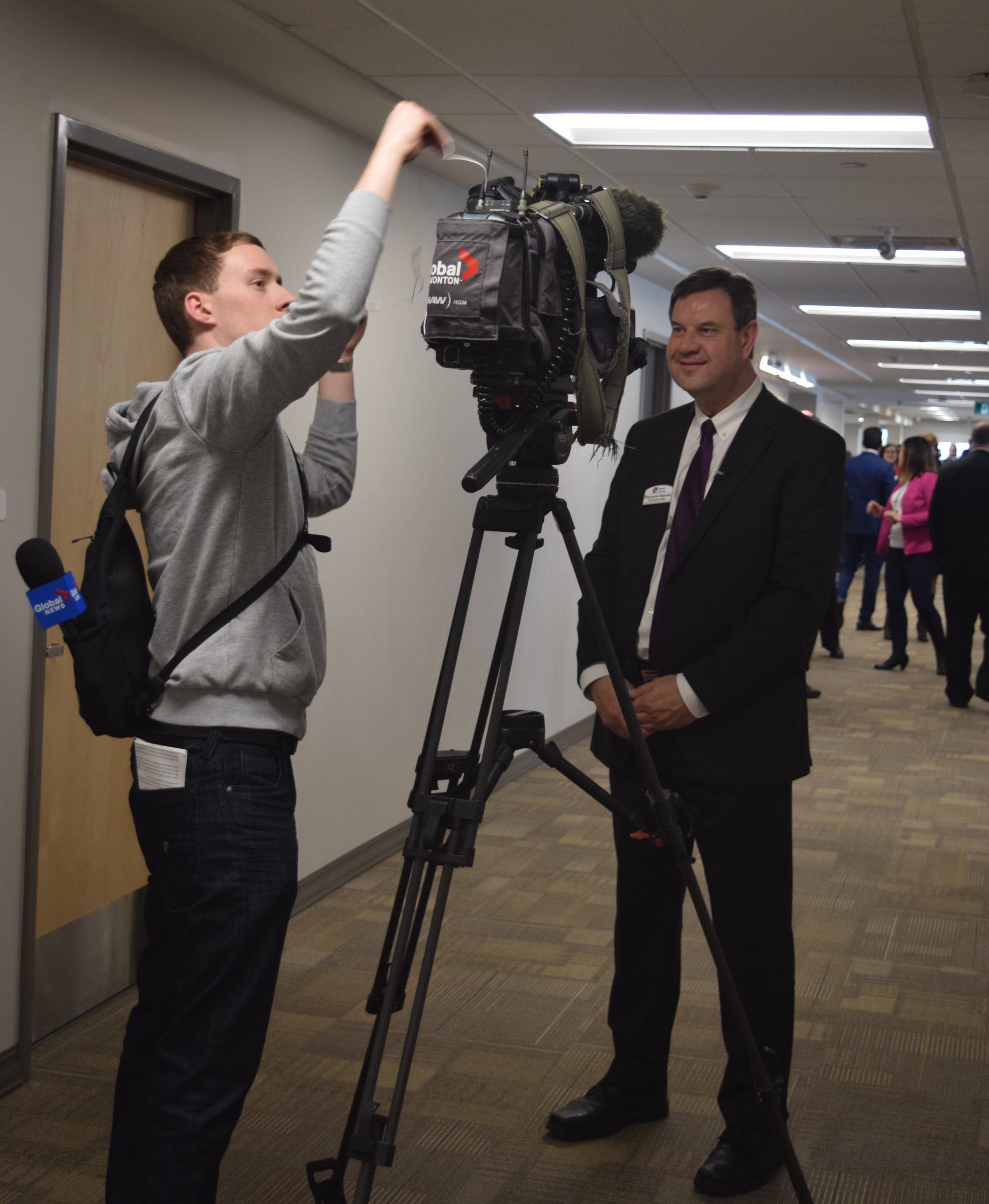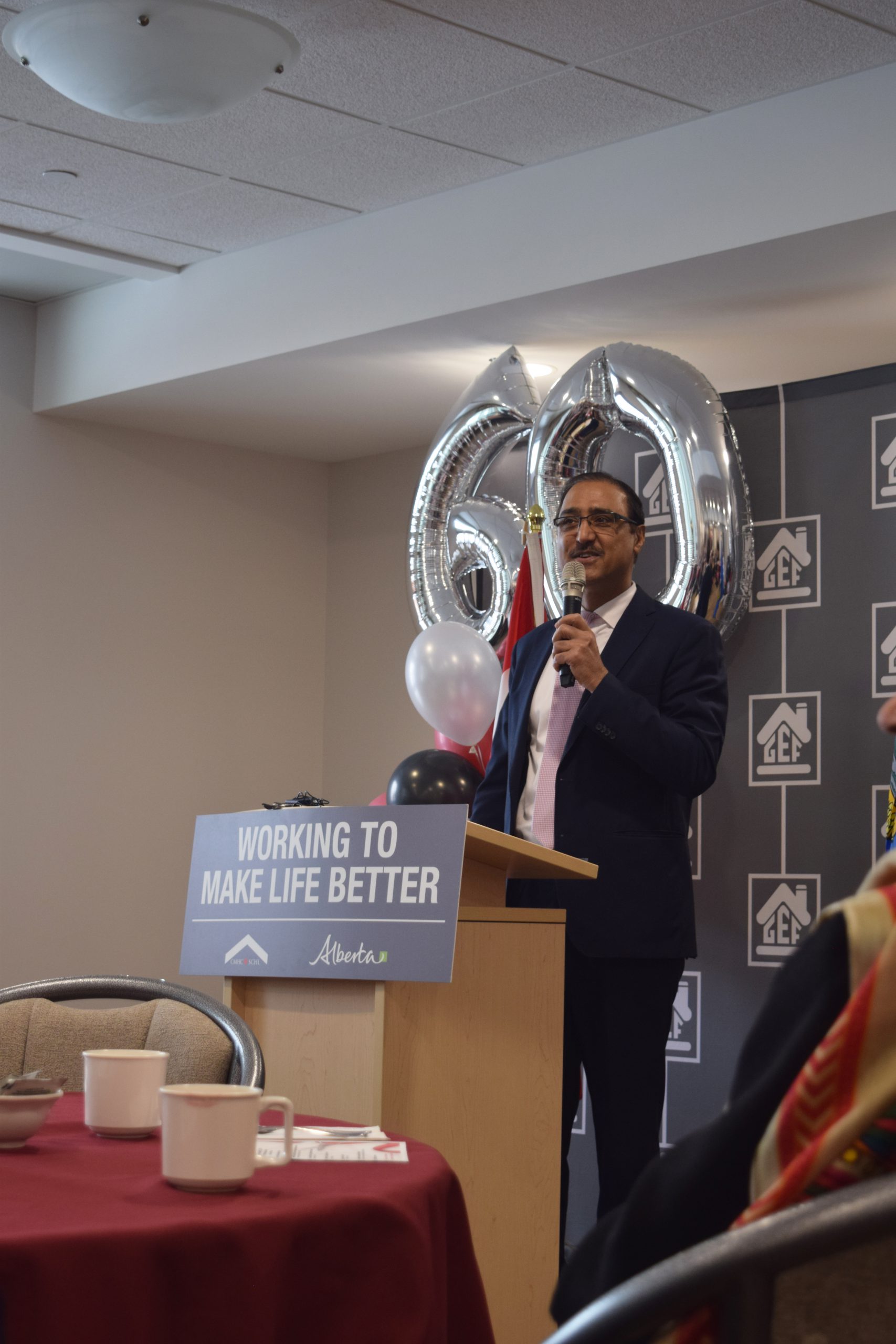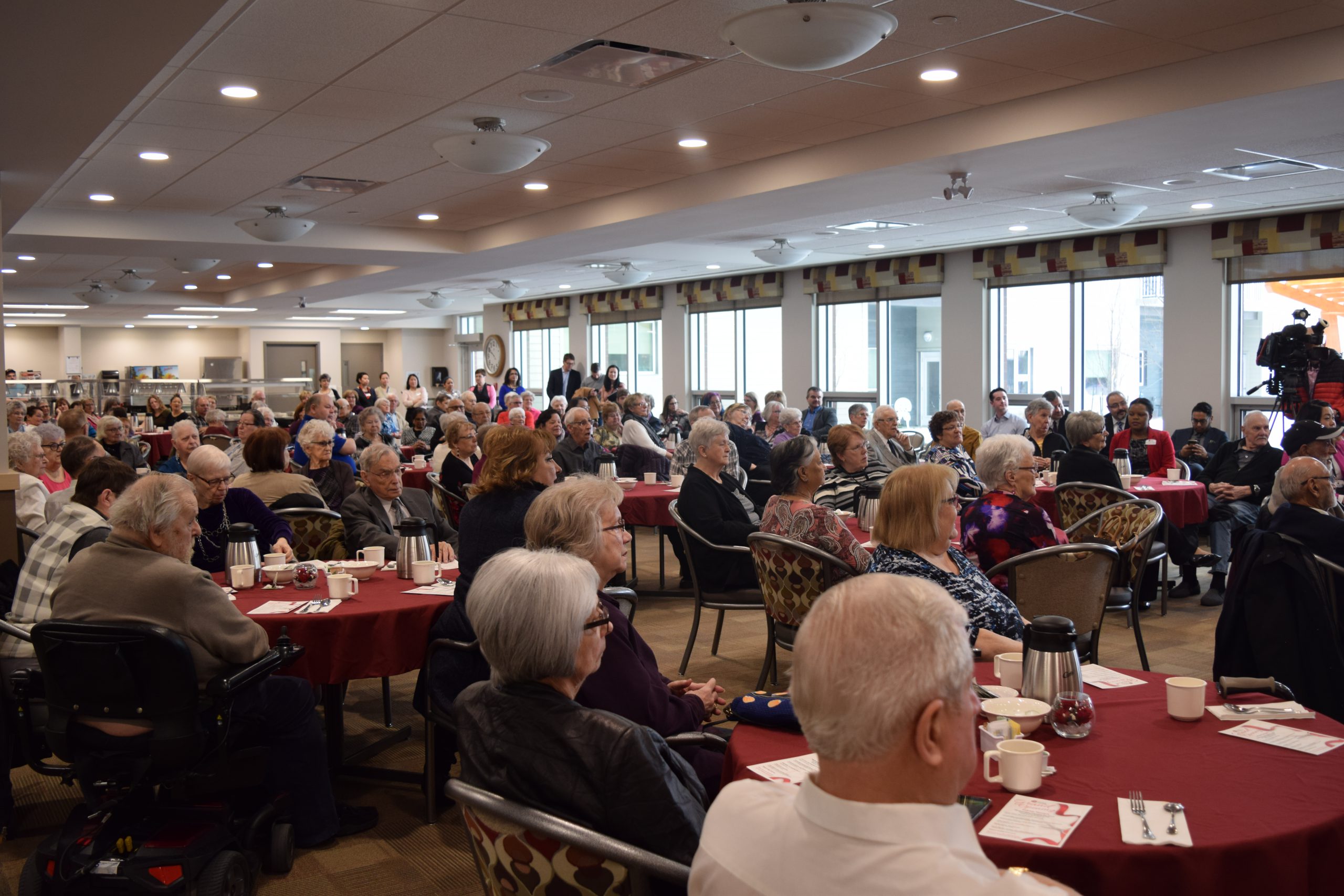Tag: seniors apartment

Elaine Ginter was over the moon when she was finally reunited with her dog, Pepper. Pepper, a Bichon cross, was with Elaine for five years before they were separated. After living without Pepper for over a year at Porta Place, Elaine couldn’t be happier that GEF implemented a pet policy. Pepper is the very first furry resident of GEF Seniors Housing, and is fitting in quite well!

The new pet policy, which was rolled out in January 2020, went through months and months of work to develop, to ensure that each pet that is brought into one of our communities fits perfectly into our family. There are certain criteria that a pet has to meet, but the overall goal is to enhance the quality of life of our seniors.
Pepper moved in with Elaine’s daughter while she was getting settled at Porta Place. It was hard for her, as Pepper is like the son she never had. Elaine could go over and visit Pepper, but it was never the same. After continuously asking about the pet policy, Elaine was truly on cloud nine when she was told Pepper was able to move in with her. “I felt like my life had a purpose again. It meant the world to me!”
Having Pepper back in her life full-time means Elaine is getting out of the house more. She needs to take him out to do his business, and they go for walks and car rides. Pepper gives Elaine a reason to stay motivated and get active!

“There were a few neighbours that were hesitant with this new policy and having a dog live in their building, but when they got to know Pepper and what a sweet dog he is, everyone was on board,” said Elaine. “When we get off the elevator, everyone says ‘Hi Pepper’ and gives him some love.”
It even took Pepper some time to adjust to his new living situation. “At my daughter’s house, he was so used to being let out the back or front door. Now we have to go in an elevator to go outside. He used to be scared of the elevator but has now since gotten used to it. Whenever we get to our floor, he knows exactly which door to go to – which door is home!”
“I do love it here at GEF! My neighbours, the staff – they are all so wonderful! Everyone is doing an amazing job, and I have settled in quite nicely,” said Elaine. “But it has made my experience even better, having my Pepper here with me! I wouldn’t change it for the world!”

On February 27, 2019, Sakaw Terrace (5815 Millwoods Road South, Edmonton) held its Grand Opening. Over 160 residents, tenants, guests, and staff joined us to celebrate this very momentous occasion.
“The official opening of Sakaw Terrace is a very proud time for GEF Seniors Housing as it allows seniors living in the Mill Woods community an affordable, secure, and friendly place to call home,” explained Raymond Swonek, CEO of GEF Seniors Housing.

MLA for Edmonton-McClung Lorne Dach MC’d the event and we heard wonderful speeches from the Honourable Amarjeet Sohi, Minister of Natural Resources; the Honourable Christina Gray, Minister of Labour; GEF Board Chair Karen Lynch and ASCHA’s Executive Director Irene Martin- Lindsay!

The day was full of big smiles and happy hearts. Residents and tenants who have already moved in were so excited to show off their new home. After the speeches were done, a ribbon cutting to announce the official opening commenced. Cake and refreshments were followed by tours of the building. Guests who went on the tours were impressed by the 70 lodge rooms and 88 apartments, two outdoor courtyards, a communal greenhouse, a theatre room, a salon, a bistro, underground and above-ground parking, and much more!
Seven years from concept to occupation, on November 1, 2018, GEF opened the doors to welcome the first Sakaw Terrace residents. This carefully planned project adopted an Integrated Project Delivery (IPD) collaborative partnership approach to construction. “What this means is that everyone has some skin in the game. The IPD contract has ten parties signed on plus GEF Seniors Housing. All ten of the IPD parties have put their profits on the line for the duration of the construction, which keeps everyone invested in finding those efficiencies and keeping everything on schedule” explains Doug Kitlar, Director of Facility Management. By using this method, the project was able to be completed ahead of schedule and under budget!
The building is currently 90% full and hoping to be at 100% in the next few months. Residents and tenants are feeling at home living at Sakaw Terrace. “I just love the new building. The meals are wonderful and the sugar cookies are just delightful” said a lodge resident. An apartment tenant mentioned “It is my first time in community living and I am more than over the moon. The building, the staff, there is nothing not to like.” One other apartment resident said “I like my apartment. Everything is lovely. It’s beautiful. I like my privacy, but I never feel alone here.”


